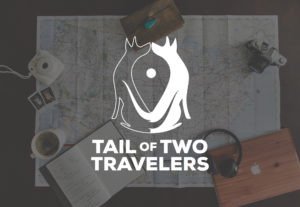Disclosure: Please assume any links throughout our site are affiliate links. This means, at no extra cost to you, we might earn commission should you decide to make a purchase. We only partner with companies or recommend products we’ve personally used and loved.
5 Steps to Decluttering Your Life
One week before my 25th birthday, I bought my first house. I finally had my own space after living in three different places over three years, and I couldn’t wait to get settled in.
A common phrase you hear when moving is “You never know how much shit you have until you have to pack it up in boxes.” I felt the opposite. I didn’t have much more than a bedroom full, having moved back into my dad’s house to help my family shortly after my mom passed away.
So one Sunday afternoon, I packed up everything I owned, loaded it into my dad’s truck, and moved into my 1,200 square foot townhouse before dinner time. It turns out three floors is a lot of space to fill before you stop hearing your voice echo off the walls. Naturally, I filled it up that empty space. Furniture, trips to Home Goods, cute things on Etsy. Hell, I even accumulated random yard sale treasures just to fill up all the extra closet space I had. I knew I’d eventually find some use for it. Then, I bought an excess of clothes and shoes to fill up my two walk-in closets. And I spent my weekends tidying up the constant clutter to keep my home presentable.
I can’t remember a time in my life that I’ve ever been a materialistic person.
So the more I accumulated, the bigger and more consistent my anxiety became. I felt stuck – ball-and-chained to the shit I just spent money on but really didn’t need. I followed every step society told me I needed to achieve what resembles a successful, happy life. But I didn’t feel happy.
The things I owned, owned me.
I found myself doing a lot of research on minimalism. A friend of mine worshipped a pocket-sized international bestseller she recently finished, written by Marie Kondo called The Life Changing Magic of Tidying Up: The Japanese Art of Decluttering and Organizing.
I bought a copy, and it completely changed my outlook toward my material possessions. Like similar self-help books, Kondo offers practical advice for cleaning and organizing. But the reason she has sold over two million copies is because she focuses more on the psychology of owning material possessions.
Here are some actions you can take today to master the KonMari method, declutter, and simplify your life.
Step One: Tidy by category, not by room.
Everyone seems to clean according to room. First we tackle the bedroom and the laundry. Then we handle the living room. After that, we scrub away at the kitchen. But these rooms always seem to maintain the same level of filth and require the same level of cleaning week after week.
When we clean by room instead of category, the same types of items seem to get stored in multiple places, and we simply lose track of it all. By putting every item from the same category that you own in one place, you’ll quickly realize the sheer amount of stuff that you have.
Kondo recommends some of the following categories and subcategories:
- Tops Bottoms
- Clothes that should be hung
- Socks
- Underwear
- Bags
- Accessories
- Clothes for specific events (i.e. swimsuits)
- Shoes
- CDs/DVDs
- Skincare and toiletries
- Makeup
- Electrical equipment
- Household equipment (stationery, writing materials, etc.)
- Supplies (Medicine, detergents, etc.)
- General/pleasure
- Practical
- Visual
- Magazines
- Needs attention
- Should be saved (contractual)
- Should be saved (other)
- Photos
- Cards and letters
- Sentimental items
Go through this list one-by-one. Find each item you own, in every room, from every category, in this exact order. She organizes the categories this way for a purpose. Pile it all up on your bed, or on the floor. Then move onto the next step.
Step Two: Ask yourself “Does this spark joy?”
Literally, put your hands on every single item you own in each categorized pile and ask yourself this question.
If the answer is yes, keep it; if the answer is no, discard it.
The items that make you say “Yes!” without a second thought should be the benchmark feeling you use for every other item. If you’re having trouble deciding whether or not to discard something, Kondo asks us to attribute human feelings to our belongings. It sounds corny and ridiculous, but it works. For example, how does that sweater feel being crammed onto a hanger and forgotten about?
Many times, the only reason we hold onto something is because we’d feel guilty getting rid of it, even if it no longer serves a purpose in our lives. Sometimes respecting something means letting it go.
Step Three: Store everything vertically.
Now that you’ve significantly pared down your possessions, it’s time to organize what you’ve kept. Kondo recommends the following storage methods:
- Fold, don’t hang. Put everything you can in a dresser, and fold using this specific origami-like approach:
- Fold one side of the garment across the center, then fold the opposite side to create a rectangle.
- Fold the rectangle in half lengthwise.
- Fold this into halves or thirds.
- Stand upright.
- Store everything vertically. This helps you see every item you have at once and maximizes space. It also eliminates the need to dig through piles, and lessens the chance something at the bottom of a pile will be forgotten.
You can purchase cheap drawer dividers on Amazon, or you can repurpose an old shoebox to help with this step. Keep in mind vertical storage doesn’t just apply to clothes – you can use it for every category. Check out Kondo’s Spark Joy: An Illustrated Master Class on the Art of Organizing and Tidying Up for more specifics.
Step Four: Do it all at once.
Tidying should be a one-time event, not a daily chore. If you only tidy up a little bit each day, you’ll find you’ll always have something to clean. So turn off the television, hide your cell phone, and avoid anything that might distract you. Something like this requires your full and undivided attention.
Once you’ve completed the process, you will still have to tidy here and there, but you’ll devote much less time to it because everything will have an intentional and purposeful place.
Step Five: Collect only the things you love.
Approach every purchase you make in the future using the KonMari method, and you’ll find greater peace, clarity, and happiness.
Trust me. It took me less than one week to focus and get through my belongings. When I finished, I discarded or donated over 20 bags and boxes. Now, I live more based on purpose instead of impulse. It’s only one small step toward living more minimalistically, but I’ve never felt lighter – literally and metaphorically.
After all, the best way to find out what we really need is to get rid of what we don’t.
How do you live minimalistically? Tell us in the comments below. We’d love to incorporate your tips into our lifestyle.
Related Post: The 4-Hour Workweek






